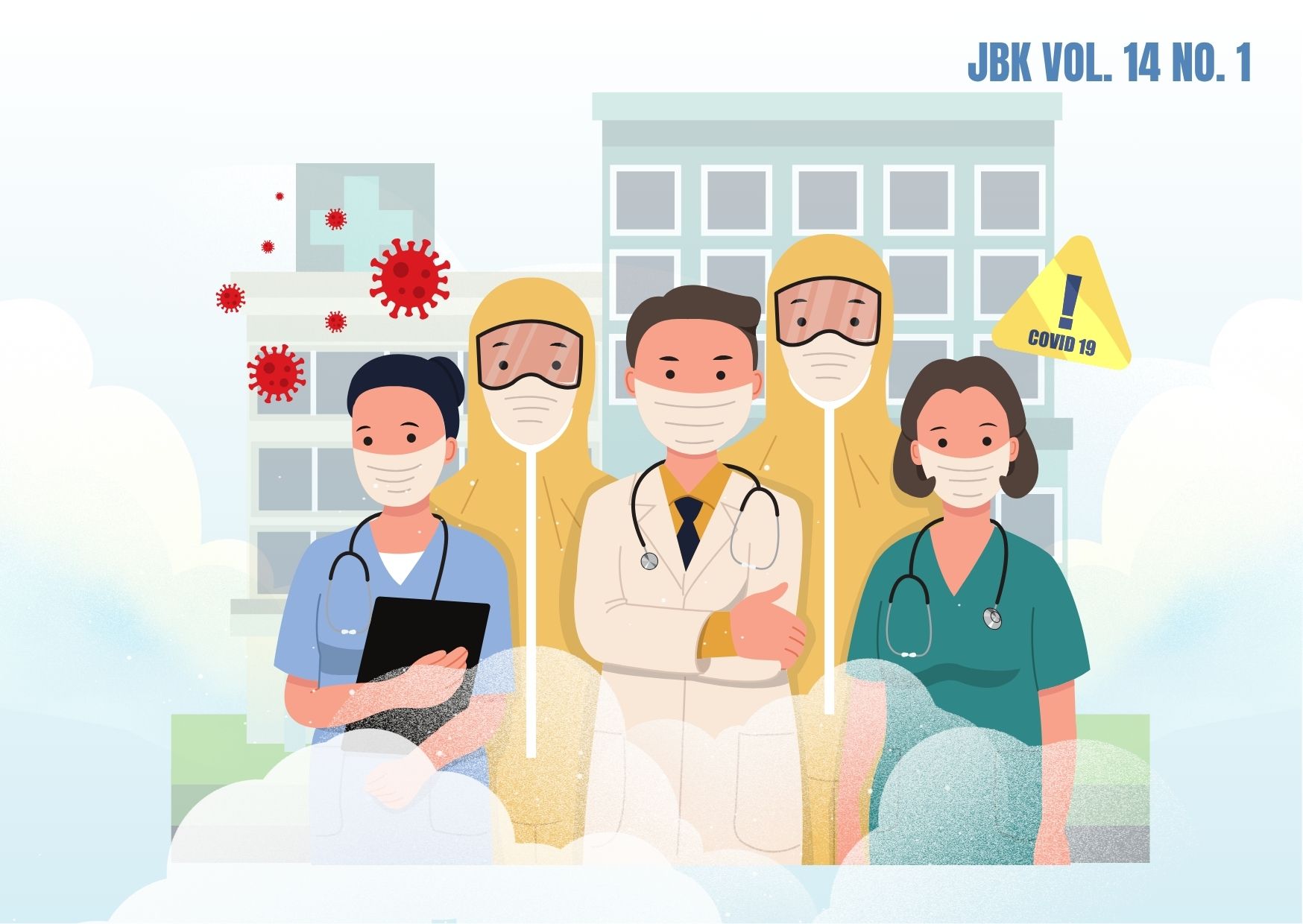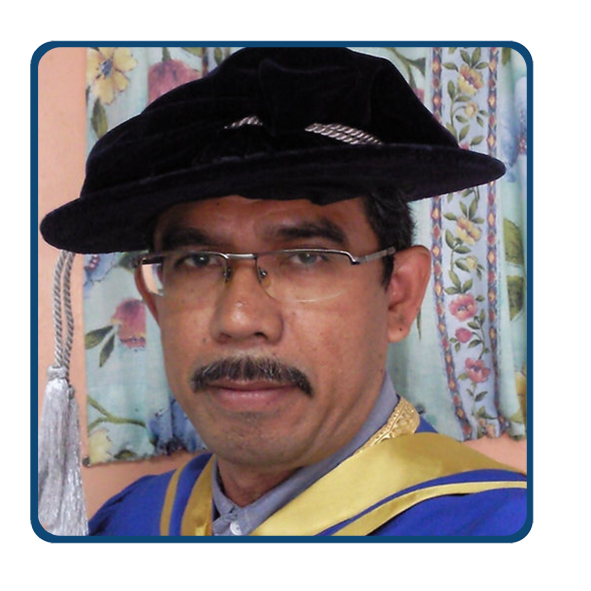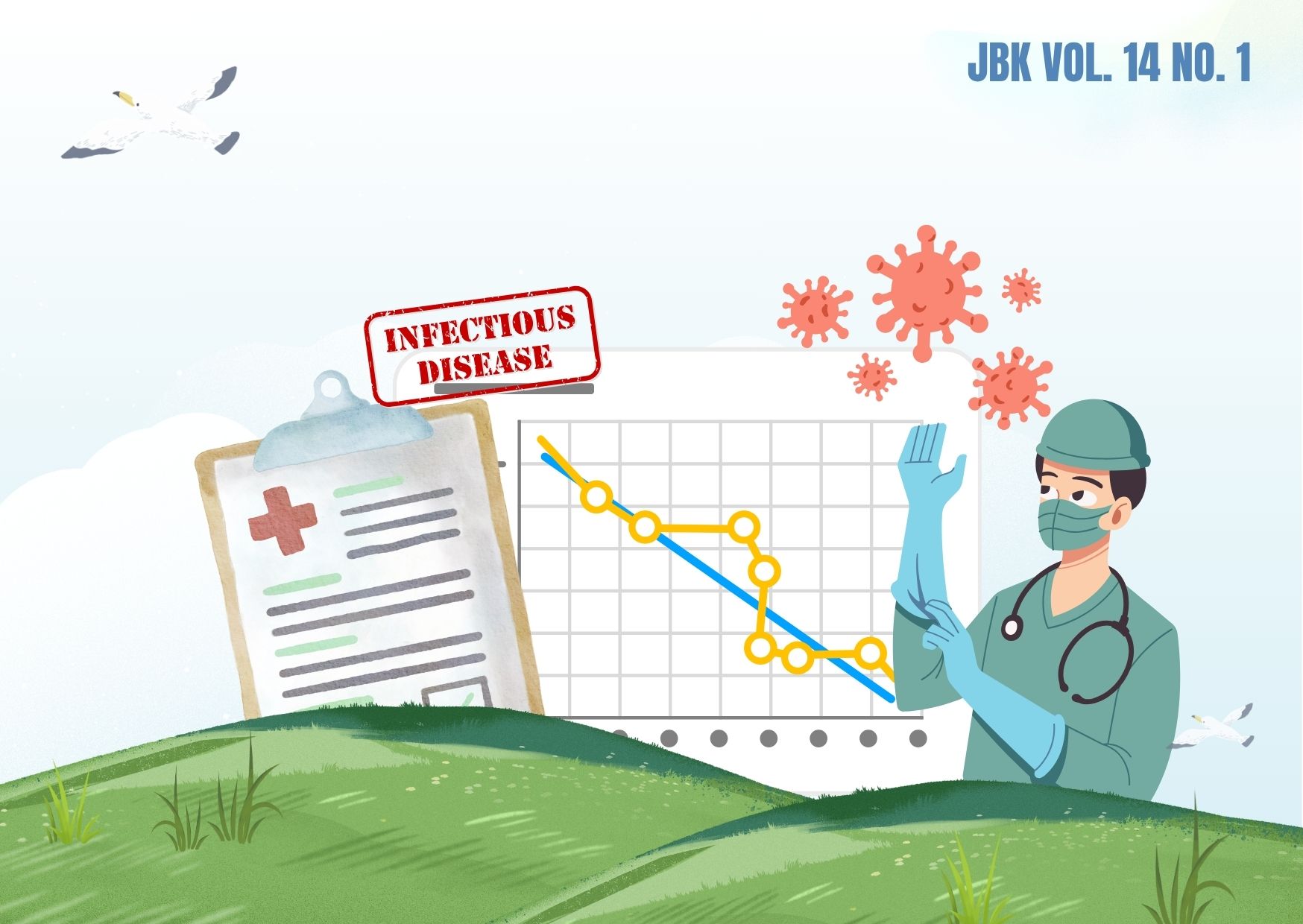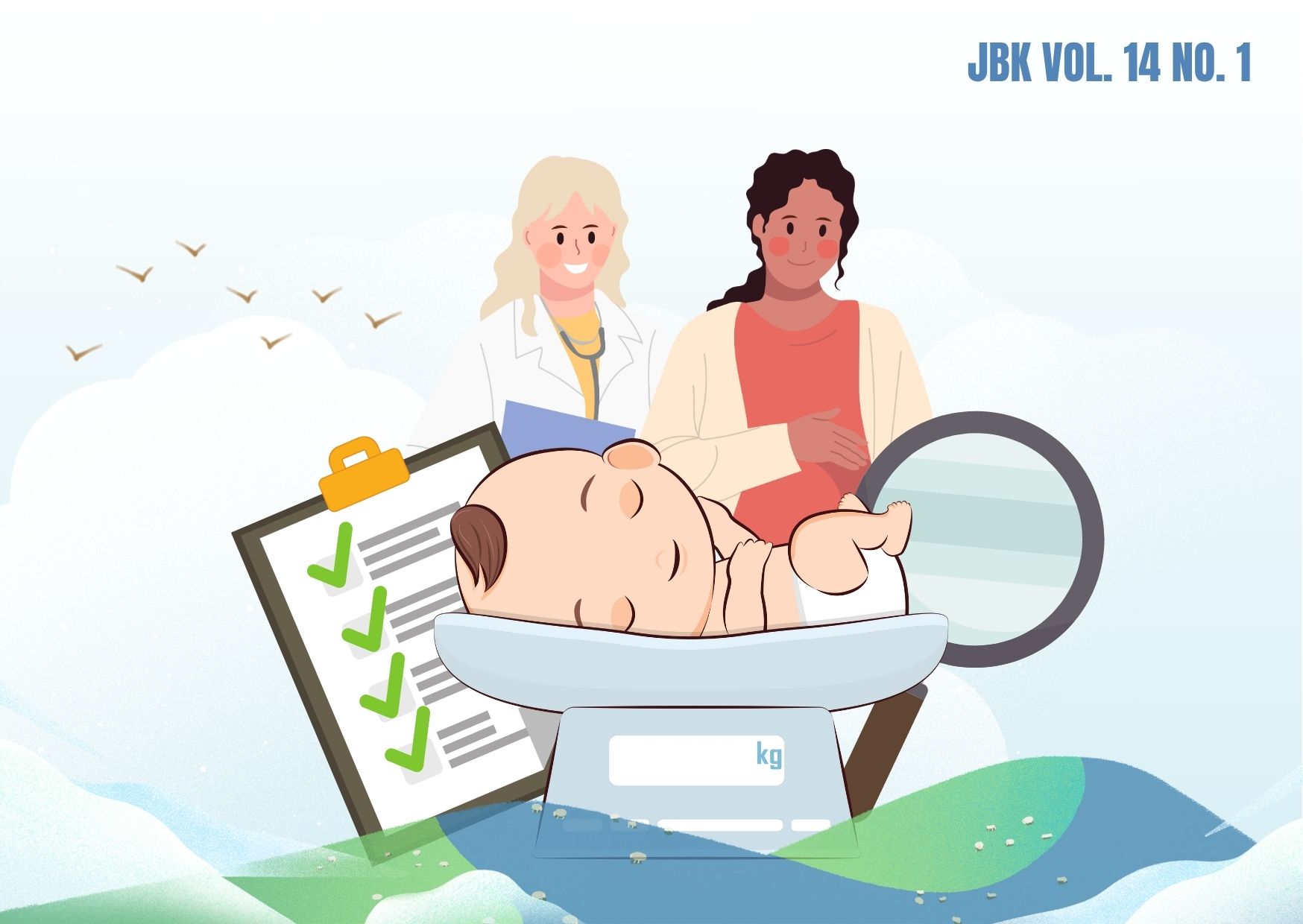ANALYSIS OF THE INFLUENCE OF PERSONAL SAFETY PRACTICES, ORGANIZATION AND RESPONSES PERCEIVED BY HEALTH WORKERS ON HOW TO MANAGE THE RISK OF COVID-19

Downloads
In response to the COVID-19 pandemic, healthcare workers were required to implement safety practices to protect themselves from high transmission risks. The aim of this study is to analyze the influence of personal safety practices, organizational practices, and perceived responses by healthcare workers on how they manage COVID-19 risks. This study is an analytical research using a cross-sectional method. The research instrument used was an online questionnaire distributed in June 2022. The inclusion criteria were healthcare workers serving as frontliners at Community Health Centers (Puskesmas) and Government or Teaching Hospitals in Surabaya City, with a minimum of three months of work experience during the pandemic (2020–2021). A total of 221 respondents participated in the study. The data were analyzed using multiple regression tests to examine the effect of independent variables (perceptions of personal safety practices, organizational practices, and perceived responses related to COVID-19) on the dependent variable (ways of managing COVID-19 risks). The majority of respondents were female (85.5%); 76.5% were married; 88.7% worked at Puskesmas, with 48.4% of them being accredited with full status, and 11.3% worked at hospitals, with 8.1% of those hospitals also fully accredited. This study found that personal safety practices (p = 0.000) and perceived responses (p = 0.025) had a significant effect on how healthcare workers managed COVID-19 risks. Meanwhile, organizational safety practices did not significantly affect risk management. Healthcare facilities need to provide safety training and psychosocial support to enhance healthcare workers’ preparedness and resilience during crises.
Lotfi M, Hamblin MR, Rezaei N. COVID-19: Transmission, prevention, and potential therapeutic opportunities. Clin Chim Acta [Internet]. 2020;508:254–66. Available from: https://doi.org/10.1016/j.cca.2020.05.044
WHO. Coronavirus disease (COVID-19) pandemic [Internet]. 2020. Available from: https://www.who.int/emergencies/diseases/novel-coronavirus-2019
Aeni N. Pandemi COVID-19: Dampak Kesehatan, Ekonomi, & Sosial. J Litbang [Internet]. 2021;17(1). Available from: https://doi.org/10.33658/jl.v17i1.249
Putri RN. Indonesia dalam Menghadapi Pandemi Covid-19. J Ilm Univ Batanghari Jambi [Internet]. 2020;20(2). Available from: http://dx.doi.org/10.33087/jiubj.v20i2.1010
Listiono, Suriastini W, Alfah D, Sikoki B, Hermoko R, Rifai LU, et al. DAMPAK PANDEMI COVID-19 TERHADAP LAYANAN KESEHATAN BALITA. J Kel Berencana [Internet]. 2021;6(1). Available from: https://doi.org/10.37306/kkb.v6i1.56
UNICEF. Rapid Assessment: Immunization Services in Indonesia [Internet]. 2020. Available from: https://www.unicef.org/indonesia/reports/rapid-assessment-immunization-services-indonesia
Moynihan R, Sanders S, Michaleff ZA, Scott AM, Clark J, To EJ, et al. Impact of COVID-19 pandemic on utilisation of healthcare services: a systematic review. BMJ Open [Internet]. 2021;16(11). Available from: https://doi.org/10.1136/bmjopen-2020-045343
Sarasnita N, Raharjo UD, Rosyad YS. DAMPAK PANDEMI COVID-19 TERHADAP PELAYANAN KESEHATAN RUMAH SAKIT DI INDONESIA. J Kesehat [Internet]. 2021;12. Available from: https://doi.org/10.35730/jk.v12i0.508
Ergei A, Spiva L, Li L, Breashears R, Zhan G. Perceptions of Risk, Work, and Lifestyle Changes on Mental Health of Healthcare Workers Amidst the COVID-19 Pandemic. Int J Env Res Public Heal [Internet]. 2022;19(9):5420. Available from: https://doi.org/10.3390/ijerph19095420
Lai J, Ma S, Wang Y, Cai Z, Hu J, Wei N, et al. Factors Associated With Mental Health Outcomes Among Health Care Workers Exposed to Coronavirus Disease 2019. JAMA Netw Open [Internet]. 2020;3(3). Available from: from: https://doi.org/10.1001/jamanetworkopen.2020.3976
An Y, Yang Y, Wang A, Li Y, Zhang Q, Cheung T. Prevalence of depression and its impact on quality of life among frontline nurses in emergency departments during the COVID-19 outbreak. J Affect Disord [Internet]. 2020;276(312–315). Available from: https://doi.org/10.1016/j.jad.2020.06.047
Aloweni F, AYRE TC, WONG WHM, TAN HK. The Impact of the Work Environment, Workplace Support and Individual-Related Factors on Burnout Experience of Nurses during the COVID-19 Pandemic. J Nurs Patient Saf [Internet]. 2020;1(001–009). Available from: https://www.researchgate.net/publication/348365709_The_Impact_of_the_Work_Environment_Workplace_Support_and_Individual-Related_Factors_on_Burnout_Experience_of_Nurses_during_the_COVID-19_Pandemic
Maciaszek J, Ciulkowicz M, Misiak B, Szczesniak D, Luc D, Wieczorek T, et al. Mental Health of Medical and Non-Medical Professionals during the Peak of the COVID-19 Pandemic: A Cross-Sectional Nationwide Study. J Clin Med [Internet]. 2020;9(8):2527. Available from: https://doi.org/10.3390/jcm9082527
Maneze D, Salamonson Y, Grollman M, Montayre J, Ramjan L. Mandatory COVID-19 vaccination for healthcare workers: A discussion paper. Int J Nurs Stud [Internet]. 2023;138:104389. Available from: https://doi.org/10.1016/j.ijnurstu.2022.104389
Mahmood SU, Crimbly F, Khan S, Choudry E, Mehwish S. Strategies for Rational Use of Personal Protective Equipment (PPE) Among Healthcare Providers During the COVID-19 Crisis. Cureus [Internet]. 2020;(12):5. Available from: https://doi.org/10.7759/cureus.8248
Putri CDA, Najmah N, Syakurah RA. Pencegahan dan Pengendalian Infeksi pada Tenaga Kesehatan Dalam Menghadapi Pandemi Covid-19: Sebuah Kajian Literasi. J Ilmu Kesehat. 2021;5(2):227. Available from http://dx.doi.org/10.33757/jik.v5i2.429
Jara BJ. Infection Prevention in the Era of COVID-19: 2021 Basic Procedure Review. J Nucl Med Technol. 2021;49(2):126–31. Available from https://doi.org/10.2967/jnmt.121.262281
O’Dea A, Caulfield R, Roche MA. The Impact of COVID-19 Visitor Restrictions on Clinical Cancer Nurses. Semin Oncol Nurs. 2024;40(1). Available from https://doi.org/10.1016/j.soncn.2023.151530
Lee CY, Lee MH, Lee SH, Park YH. Nurses’ Views on Infection Control in Long-Term Care Facilities in South Korea: A Focus Group Study. Korean Journal of Adult Nursing. 2018;30(6):634–42. Available from https://doi.org/10.7475/kjan.2018.30.6.634
Henderson J, Willis E, Roderick A, Bail K, Brideson G. Why do nurses miss infection control activities? A qualitative study. Collegian. 2020;27(1):11–7. Available from https://doi.org/10.1016/j.colegn.2019.05.004
Ashinyo ME, Dubik SD, Duti V, Amegah KE, Ashinyo A, Larsen-Reindorf R, et al. Healthcare Workers Exposure Risk Assessment: A Survey among Frontline Workers in Designated COVID-19 Treatment Centers in Ghana. J Prim Care Community Health. 2020;11. Available from https://doi.org/10.1177/2150132720969483
Astete-Cornejo J, Burgos-Flores M, Mayma-Aguirre KJ. Preventive measures for health workers exposed to COVID-19 (SARS-CoV-2). Rev Bras Med do Trab. 2022;20(1):140–6. Available from https://doi.org/10.47626/1679.4435.2022.781
Asa GA, Fauk NK, Ratu M, Ward PR. The impact of working in COVID-19 hospital on indonesian nurses’ mental health and wellbeing: a qualitative study. BMC Nurs. 2022;21(345). Available from https://doi.org/10.1186/s12912-022-01131-6
Yunus A, Zhou L, Stephen A-D, Tackie EA, Agyeiwaa OE, Gbolo SS. Effects of COVID-19 safety protocols on health workers’ quality of life; the mediating role of mental health and physical health; a retrospective study. Heliyon. 2024;10(14). Available from https://doi.org/10.1016/j.heliyon.2024.e34861
Aram SA, Saalidong BM, Opoku EO, Hayford IS. Perceived risk of contracting COVID-19 among healthcare workers in Ghana: A cross-sectional study. Heal Sci Reports. 2022;5(4). Available from https://doi.org/10.1002/hsr2.653
Sarker R, Roknuzzaman ASM, Hossain MJ, Bhuiyan MA, Islam MR. The WHO declares COVID-19 is no longer a public health emergency of international concern: benefits, challenges, and necessary precautions to come back to normal life. Int J Surg. 2023;109(9). Available from https://doi.org/10.1097/JS9.0000000000000513
World Health Organization. Advice for the public: Coronavirus disease (COVID-19). 2023. Available from https://www.who.int/emergencies/diseases/novel-coronavirus-2019/advice-for-public
Andrist A, MD E, Clarke C, MD RG, Harding M DO. Paved With Good Intentions: Hospital Visitation Restrictions in the Age of Coronavirus Disease 2019*. Pediatr Crit Care Med [Internet]. 2020;21(10):e924–6. Available from: https://doi.org/10.1097/JOM.0000000000002609
Hasanah Y, Dai RM, Sari DS. Implementasi Kebijakan Fungsi Puskesmas Selama Pandemi Covid 19 Di Puskesmas Margahayu Selatan Kabupaten Bandung. J Pemikir Dan Penelit Bid Adm Sos Humaniora, Dan Kebijak Publik [Internet]. 2020;3(4). Available from: https://jurnal.unpad.ac.id/responsive/article/view/33339
Arons MM, Hatfield KM, Reddy SC, Kimball A, James A, Jacobs JR, et al. Presymptomatic SARS-CoV-2 Infections and Transmission in a Skilled Nursing Facility. N Engl J Med [Internet]. 2020;382(22):2081–90. Available from: http://doi.org/10.1056/NEJMoa2008457
Artanti S, Haryatmo S. Penerapan Protokol Kesehatan di Masa Pandemi COVID-19. J Kesehat [Internet]. 2022;11(1):58–64. Available from: https://scholar.google.com/citations?view_op=view_citation&hl=id&user=_kCAyn4AAAAJ&citation_for_view=_kCAyn4AAAAJ:2osOgNQ5qMEC
Anderson-Shaw LK, Zar FA. COVID-19, Moral Conflict, Distress, and Dying Alone. J Bioeth Inq [Internet]. 2020;17(4):777–82. Available from: https://doi.org/10.1007/s11673-020-10040-9
Park Y, Kwak SH, Chung K, Park MS. Effective use of an advanced isolation unit during the COVID-19 pandemic: A retrospective cohort study. J Mivrobiology, Immunol Infect [Internet]. 2021;54(5):987–91. Available from: https://doi.org/10.1016/j.jmii.2021.06.001
Miller SL, Mukherjee D, Wilson J, Clements N, Steiner C. Implementing a negative pressure isolation space within a skilled nursing facility to control SARS-CoV-2 transmission. Am J Infect Control [Internet]. 2021;49(4):438–46. Available from: https://doi.org/10.1016/j.ajic.2020.09.014
Harisah H. Kebijakan Pemberian Insentif Pada Tenaga Medis Virus Corona Covid-19 Pendekatan Maslahah. SALAM J Sos dan Budaya Syari [Internet]. 2020;7(6). Available from: https://www.researchgate.net/publication/340631263_Kebijakan_Pemberian_Insentif_Pada_Tenaga_Medis_Virus_Corona_Covid-19_Pendekatan_Maslahah
Subramony M, Golubovskaya M, Keating B, Solnet D, Field J, Witheriff M. The influence of pandemic-related workplace safety practices on frontline service employee wellbeing outcomes. J Bus Res [Internet]. 2022;149:363–74. Available from: https://doi.org/10.1016/j.jbusres.2022.05.040
Poulsen VR, Nilsson CJ, Hansen MB, Bredal C, Juul-Madsen M, Nabe-Nielsen K. How Risk Management During COVID-19 Influences Eldercare Personnel’s Perceptions of Their Work Environment. J Occup Environ Med [Internet]. 2022;64(11). Available from: https://doi.org/10.1097/JOM.0000000000002609
Modjo R, Lestari F, Tanjung H, Kadir A, Putra RS, Rahmadani M, et al. COVID-19 infection prevention and control for hospital workers in Indonesia. Front Public Heal [Internet]. 2024;8(11). Available from: https://doi.org/10.3389/fpubh.2023.1276898
Atikassyifa AP, Azinar M. Perilaku Pencegahan Penularan COVID-19 pada Tenaga Kesehatan di Puskesmas Baki. Indones J Public Heal Nutr [Internet]. 2022;2(3):287–94. Available from: https://doi.org/10.15294/ijphn.v2i3.53837
Kemp CL. #MoreThanAVisitor: Families as “Essential” Care Partners During COVID-19. Gerontologist [Internet]. 2021;61(2):145–51. Available from: https://doi.org/10.1093/geront/gnaa161
Houghton C, Meskell P, Delaney H, Smalle M, Glenton C, Booth A, et al. Barriers and facilitators to healthcare workers’ adherence with infection prevention and control (IPC) guidelines for respiratory infectious diseases: a rapid qualitative evidence synthesis. Cochrane Database Syst Rev [Internet]. 2020;(4). Available from: https://doi.org/10.1002/14651858.CD013582
Wijayanti AR, Fitriani IS. Pandemi Covid 19: Pengalaman Pencegahan dan Pengendalian Infeksi (PPI) dengan Kesiapan Mental Bagi Tenaga Kesehatan. Indones J Heal Sci [Internet]. 2022;6(1):43–8. Available from: https://doi.org/10.24269/ijhs.v6i1.4308
Sasi EN, Sriatmi A, Kusumastuti W. Gambaran Kepatuhan Perawat dalam Melaksanakan Pencegahan dan Pengendalian Infeksi COVID-19 di RSUP dr. Soeradji Tirtonegoro Kabupaten Klaten. Media Kesehat Masy Indones [Internet]. 2022;2(1):28–35. Available from: https://doi.org/10.14710/mkmi.21.1.28-35
Saadeh D, Sacre H, Hallit S, Farah R, Salameh P. Knowledge, attitudes, and practices toward the coronavirus disease 2019 (COVID-19) among nurses in Lebanon. Perspect Psychiatr Care [Internet]. 2021;57(3):1212–21. Available from: https://doi.org/10.1111/ppc.12676
Dillard AJ, Lester J, Holyfield H. Associations between COVID-19 risk perceptions, behavior intentions and worry. Heal Psychol Rep [Internet]. 2022;10(2):139–48. Available from: https://doi.org/10.5114/hpr.2022.114477
Galletta M, Piras I, Finco G, Meloni F, D’Aloja E, Contu P, et al. Worries, Preparedness, and Perceived Impact of Covid-19 Pandemic on Nurses’ Mental Health. Front Public Heal [Internet]. 2021;9. Available from: https://doi.org/10.3389/fpubh.2021.566700
Menon GR, Yadav J, Aggarwal S, Singh R, Kaur S, Chakma T, et al. Psychological distress and burnout among healthcare worker during COVID-19 pandemic in India-A cross-sectional study. PLoS One [Internet]. 2022;17(3). Available from: https://doi.org/10.1371/journal.pone.0264956
Saptarini I, Novianti N, Rizkianti A, Maisya IB, Suparmi S, Veridona G, et al. Stigma during COVID-19 pandemic among healthcare workers in greater Jakarta metropolitan area: a cross-sectional online study. Heal Sci J Indones [Internet]. 2021;12(1). Available from: https://hsji.kemkes.go.id/index.php/hsji/article/view/4754
Copyright (c) 2025 Jurnal Biometrika dan Kependudukan

This work is licensed under a Creative Commons Attribution-NonCommercial-ShareAlike 4.0 International License.
Copyright©2022 Jurnal Biometrika dan Kependudukan (Journal of Biometrics and Population)
This work is licensed under a Creative Commons Attribution-NonCommercial-ShareAlike 4.0 International License.
1. Copyright of all journal manuscripts is held by the Jurnal Biometrika dan Kependudukan.
2. Formal legal provisions to access digital articles of the electronic journals are subject to the provision of the Creative Commons Attribution-ShareAlike license (CC BY-NC-SA), which means that Jurnal Kesehatan Biometrika dan Kependudukan to keep, transfer media/format, manage in the form of databases, maintain, and publish articles.
3. Published manuscripts both printed and electronic are open access for educational, research, and library purposes. Additionally, the editorial board is not responsible for any violations of copyright law.


































